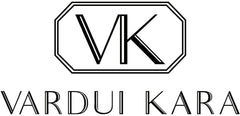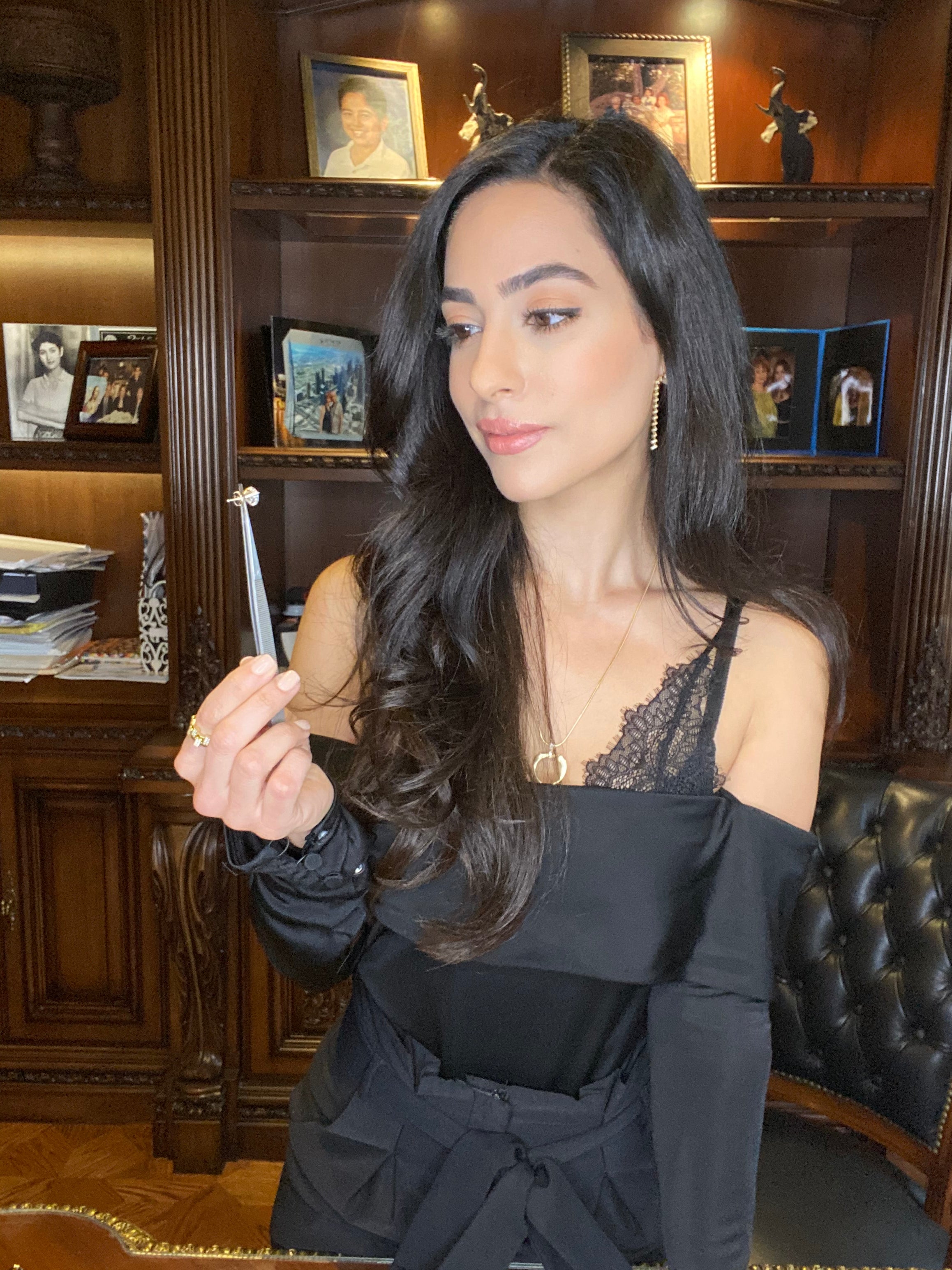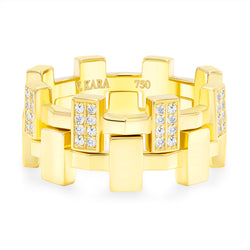I posted an poll on my Instagram (@varduikarajewelry) story asking my followers what my next video topic should be. Of those who voted, 68% of you voted for me to do a video demonstrating how to tell a real diamond from a fake. We’re not going to be comparing diamonds to lab grown diamonds because lab grown diamonds and real diamonds are both chemically and visually the same. Instead, we are going to be testing real diamonds against simulated diamonds, such as cubic zirconia (or CZ for short). CZ is clear in color like a diamond, but it is not the same chemical substance as a diamond. At the end of this blog post, I’ll tell you my only reason for why I think you should consider CZ engagement and wedding rings.

The word, diamond, comes from the Greek “adamas,” which means unbreakable. As time goes by, more and more imitations are being made. Fortunately there are ways to detect them before it’s too late. These things are good to know, right? There are five easy quick tests you can do at home and two quick ones a local trusted jeweler could perform if you’re somewhat still skeptical. You will need a newspaper, lighter, a sheet of sandpaper, a loupe, and a flashlight.
- The Fog Test – Real diamonds disperse heat instantaneously and the special crystal structure of diamonds has the side effect of hydrophobia. Diamonds are afraid of water. Water does not stick to them. It just falls off, so if you breathe on a diamond, the fog clears up almost immediately because it repels water and steam, whereas for a CZ, it will take about a good 3-4 seconds before the fog clears up because imitations take longer to disperse that heat.
- Newspaper Test –This is meant to check the transparency of your stone. Your diamond technically can’t be mounted for this one, but if a diamond is mounted, you shouldn’t be able to see through to the bottom of it. The reason is simply because of the way the light passes through the many facets of the stone. For this test, grab a newspaper and find a small bold text. Place your diamond face down on the text. Real diamonds refract and bend light as it passes through them making the text appear blurry and impossible to read. If we were to place the CZ face down on the text, we’d be able to read the newsprint clearly or at least distinguish the letters through the stone.
- Sandpaper Test – My favorite. You might have to be a little brave for this one. (The diamond does need to be unmounted, so that the prongs don’t get scratched.) You put the stone face down on the sandpaper and rub it right to left. If it’s a fake stone, you’re totally going to destroy the top of it and see lots of scratch marks. If it’s real, there won’t be any marks and the stone will be as it was before you rubbed it on the sandpaper. *Rub As you can see the fake stone is totally scratched up and the diamond is crystal clear. There isn’t a mark on it.
- Burn Test – To do this test you put the stone in between the tweezers and hold it under the flame for about 30 seconds then you dip it into the glass of water. The real stone should be totally fine and look the same as before you burned it. If it’s a fake stone, it should be cracked internally and be smashed into pieces. This happens since weaker materials are not able to handle the rate at which the materials expand then contract due to the heat of the fire, unlike real diamonds that were formed under intense heat and pressure billions of years ago.
- Magnification Test – You’ll need a loupe, which is a 10x jeweler’s magnifying glass. If you look at the edges of a real diamond, they’re always pointy and crispy. Cubic zirconia and other simulants are smoother on the edges. Also, under the magnifying glass, you’ll be able to see abrasions and scratches on the surface of simulants.
- Refractivity Test – This one is a little tricky to do. One of the beauties of diamonds is their ability to refract light causing the light to bend and curve with every movement. A fake diamond will not have this effect due to its lack of density. So, the way a diamond reflects light is unique in that if you were to hold a diamond under sunlight, the inside of a real diamond should sparkle gray and white, while the outside reflects a rainbow of colors onto other surfaces. A fake diamond will have a rainbow of colors that you can see inside the stone as well.
- Weigh It – Interestingly enough, a diamond weighs less than a cubic zirconia. A jeweler can remove your stone and place it on a scale to see if its total carat weight roughly matches the size of the stone. Next, you can place a similar sized CZ onto the scale. If your stone weighs about 55% less than the similar sized cubic zirconia, your stone is real.
- Conductivity Test – Most jewelry stores have a simple device for testing conductivity, known as the Thermal Conductivity Probe. It has a metal needle that touches your stone. If the light goes off then you have a real diamond on your hand. If it doesn’t go off, then it’s a safe bet you’re rocking a cubic zirconia.
Of course this all by glancing at a stone and they’re not definitive ways to tell whether the stone is real or fake, but they are good indications. The best way to prevent any doubt about your diamond or stone is to verify the authenticity of the stone before purchasing and only purchase from a place that you trust. It is always best to consult a professional gemologist and purchase stones with a GIA certificate.
Decoding Real Diamonds with Vardui Kara
Buy brilliance with confidence at Vardui Kara as we guide you on distinguishing a real diamond in sunlight. Experience the radiance of genuine diamonds and learn how to tell a natural diamond from imitations. Our commitment to authenticity ensures you purchase with certainty.
When you shop Vardui Kara, you invest in the expertise of discerning natural diamonds vs fake. Boost your knowledge and boost your diamond jewelry collection with genuine sparkle. Find the subtle nuances that set a natural diamond apart. Choose Vardui Kara for a purchase that reflects your discerning taste.
Diamond Chemistry
“Diamond is a solid form of the element carbon with its atoms arranged in a crystal structure called diamond cubic. Another solid form of carbon known as graphite is the chemically stable form of carbon at room temperature and pressure, but diamond is metastable and converts to it at a negligible rate under those conditions. Diamond has the highest hardness and thermal conductivity of any natural material, properties that are used in major industrial applications such as cutting and polishing tools. They are also the reason that diamond anvil cells can subject materials to pressures found deep in the Earth.”
Get ready to shine in the sunlight with Vardui Kara's collection. Find, experience, and cherish the brilliance of real diamonds. Shop now and make an informed choice – because authenticity is the ultimate luxury.
Read More: Lab Grown Diamonds



Leave a comment